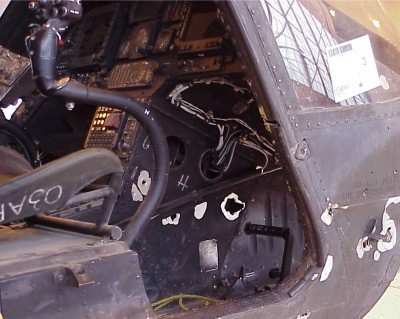Seeking Technology Available Soon To Harden Scout And Utility
Birds
The US Army has identified three survivability technologies that
it would like to incorporate in its helicopters. Survivability, in
military-aircraft terms, is the ability of the aircraft to take
hits from enemy weapons systems without any vital damage to the
aircraft and its crew. For most military technologies, like
vehicles, survivability means hardening the item with armor. But
aircraft can only carry so much armor -- which makes this field
ripe, the Pentagon thinks, for technological improvement.

Certainly current helicopters are more vulnerable than the Army
would like. The illustrated OH-58D Kiowa Warrior made it back to
its base at Baghdad, miraculously, but even the Army's best-armored
helicopter, the AH-64 Apache, has proven vulnerable to small arms
and light fragmentation weapons. Once in Afghanistan and once in
Iraq, the Army had Apache squadrons rendered non-mission-capable by
enemy fire (although the Apache's cockpit did keep the crews
alive). And cargo, scout and utility helicopters are flimsy,
compared to the Apache.
Army experts at the Aviation Applied Technology Directorate
(AATD) have identified three technologies which might help current
and future Army helicopters go to Downtown Bulletsville and get
home safely. Those technologies, all targeted against rifle-caliber
machine-guns, are SIMS, MFS and SPS.
The directorate is offering development contracts for each of
these technologies, with varying amounts of dough available for the
contracts, which are expected to run about two years long, give or
take a few months.
Responses to the solicitation are due in to AATD by October 31,
2005, which is already a month into the first available contract
month (FY2006 begins October 1).
SIMS is Structural Integrity Monitoring System. "Having a clear
understanding of an aircraft’s structural integrity will
enable the pilot to safely fly within the aircraft’s limits
as well as notify the crew when maintenance actions are required,"
AATD suggests. It wants to see a system for tracking the structural
stresses on aircraft and reporting failures before they happen.
Think of this as the pressurized fault-detection system in
rotorblades, writ large.
The Army wants to see contractors using off-the-shelf sensors
for SIMS and it expects that multiple organizations will share
early development money.
 BPS is Ballistic Protection System.
Now, cargo and utility helicopters have a structural floor, which
is protected by non-structural armor.
BPS is Ballistic Protection System.
Now, cargo and utility helicopters have a structural floor, which
is protected by non-structural armor.
The solicitation lays out the problem: "Current parasitic armor
has a significant weight penalty that limits range and payload of
the aircraft. This weight penalty arises from the use of separate
components for the functions of carrying loads (structure) and
providing ballistic protection." The AATD thinks that with proper
design, one part can do double duty as structural floor and armor
protection, suitable for defeating the 7.62mm rounds fired by the
world's light and general purpose machine guns -- which protection
would also stop rifle bullets.
SPS is Spaced-Armor Protection System. This is designed to take
advantage of the physics of rifled-gun projectiles, which are
moving forward at supersonic speed while spinning at very high RPM.
The spin, imparted by the rifling in the weapon's bore, makes the
projectile stable in the air.
SPS would use a stand-off plate to destabilize and tumble the
projectile, turning its armor-piercing tip away from the internal
armor which is designed to trap the projectile and absorb its
energy without allowing it to penetrate. (The projectile tumbles
because rifling only imparts enough spin to keep it stable in
materials of low density such as air. Passing through a higher
density material upsets the bullet).

The stand-off plate may serve not only to tumble the projectile
but to fragment it. Multiple lighter projectiles lose velocity (and
therefore energy) much faster than single, heavier projectiles.
Overall, the AATD has about $1.3 million to allocate to
developers that respond to its solicitation for protective
technologies.
 Airborne-NextGen 11.04.25: Anduril YFQ-44A, Merlin SOI 2, UAV Rulemaking Stalled
Airborne-NextGen 11.04.25: Anduril YFQ-44A, Merlin SOI 2, UAV Rulemaking Stalled NTSB Prelim: Elmore Travis C Searey
NTSB Prelim: Elmore Travis C Searey ANN's Daily Aero-Linx (11.03.25)
ANN's Daily Aero-Linx (11.03.25) ANN's Daily Aero-Term (11.03.25): On-Course Indication
ANN's Daily Aero-Term (11.03.25): On-Course Indication Aero-News: Quote of the Day (11.03.25)
Aero-News: Quote of the Day (11.03.25)





